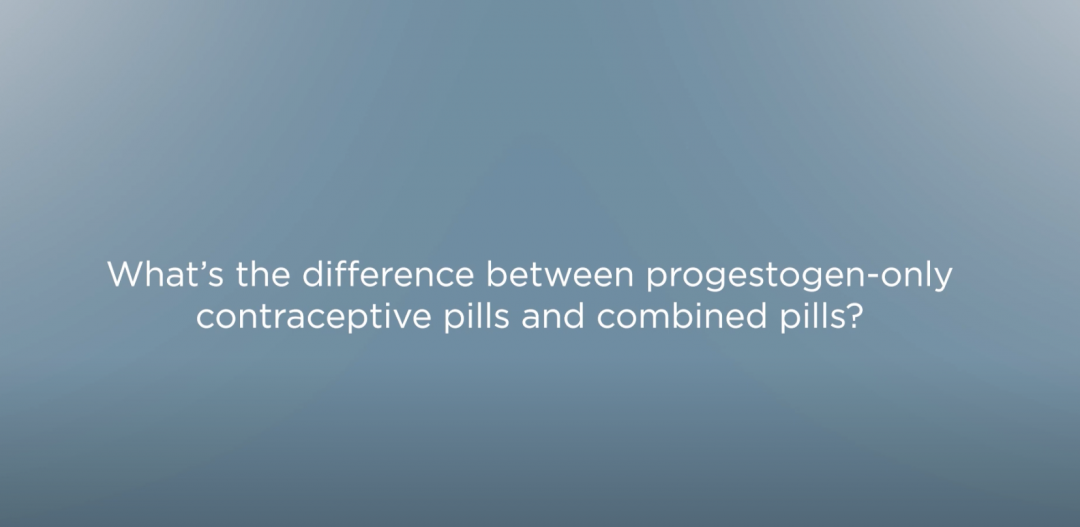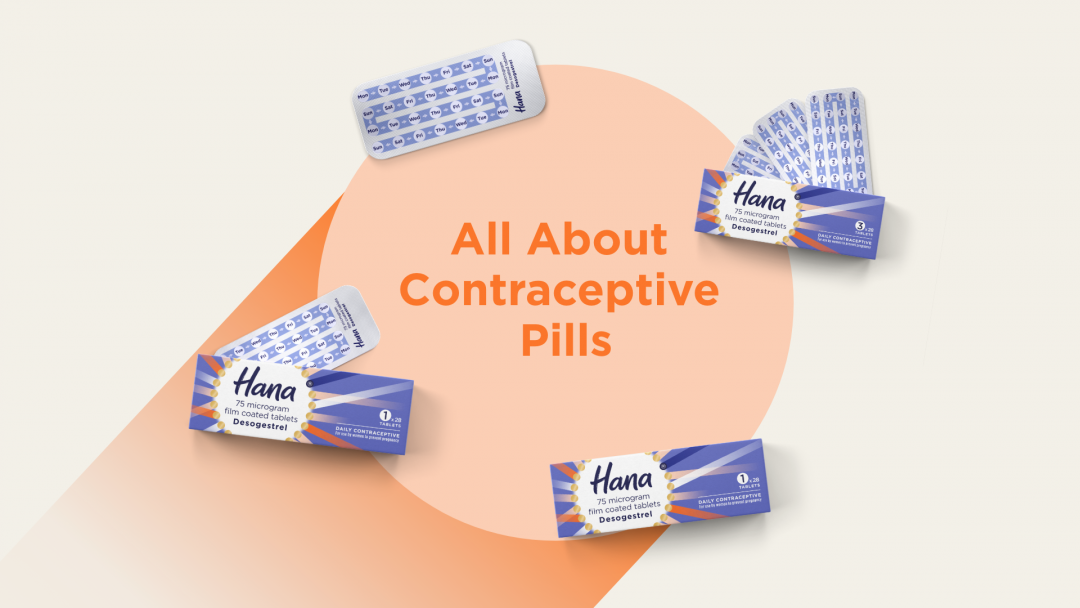You’ve definitely heard of it, you may have even taken it, but how much do you really know about the pill? While birth control pills are often simply referred to as ‘the pill’, there are actually two types of contraceptive pill which contain different ingredients.
It’s really important to learn about the contraception you’re taking so you feel empowered to take charge of what happens to your body. Join us as we do a deep dive into the differences between the progestogen-only pill and the combined pill.
What is the mini pill?
The mini pill (also known as the progestogen-only pill or PoP) is a hormonal method of contraception which contains a synthetic version of the naturally-occurring hormone progesterone. Traditional PoPs work mainly by thickening cervical mucus, and may also work to prevent ovulation. Other PoPs containing desogestrel, like Hana, work mainly by preventing ovulation and have a secondary action of thickening cervical mucus.
The PoP does not contain oestrogen and can therefore be taken by women and people with uteruses for whom oestrogen may be unsuitable, such as those with high blood pressure and smokers over the age of 35. You can also use the PoP while breastfeeding.
The progestogen-only pill is taken every day, at the same time, with no break in between packs. If you miss your pill, there is either a 12 hour or 3 hour window in which you can remember to take it, and it will still be effective. Traditional progestogen-only pills have a 3-hour window, whereas progestogen-only pills which contain desogestrel (like Hana) have a 12 hour window. Find out more about the progestogen-only pill here.

What is the combined pill?
The combined pill is a hormonal method of birth control which contains synthetic versions of the hormones oestrogen and progesterone. It works by preventing ovulation and is usually taken for 21 days with a seven day break during which you may have a withdrawal bleed. You can also get everyday (ED) pills which have no break.
As the combined pill contains oestrogen, it may not be suitable for some women and people with uteruses if they experience adverse side effects from taking this hormone. This includes people with high blood pressure and smokers over the age of 35.
It’s really important to remember that neither contraceptive pill can protect you from STDs, only condoms can do that.
Let’s look at some of the key details you should know about each pilL. This guide is for reference only and should not be used in place of a consultation with a healthcare professional, but it may help to inform your choice.

| Effectiveness | Who can take it? | How to get it? | How to take it? | |
| Progestogen-only pill/ Mini Pill | 99% effective with perfect use, 91% effective with typical use. | Can be used at any fertile age (so, from your first period until the menopause).
Suitable for women (and people with uteruses) who can’t take oestrogen. Can be used immediately after giving birth. [Evidence] |
Over the counter in pharmacy or online without a prescription.
From a GP. From a sexual health clinic. |
One pill taken at the same time every day with no breaks between packs. |
| Combined Pill | 99% effective with perfect use, 91% effective with typical use. | Can be used at any fertile age (so, from your first period until the menopause).
Suitable for women (and people with uteruses) who can take oestrogen, your doctor will ask you questions to make sure there is no indication that this pill may not be suitable for you. |
From a doctor.
From a sexual health clinic. |
One pill taken every day, at the same time, sometimes with a seven day break. |
Can you switch from the combined pill to progestogen-only pill?
Yes you can. If you’re taking the combined pill but think you’d like to try the progestogen only pill instead, the transition is pretty straightforward.
It’s important to remember that everyone is different and some types of birth control may just not suit you for whatever reason.
It’s important not to leave a gap in between your old pill and your new pill as this could impact its effectiveness. You can switch to your new pill the day after finishing your last pack. If you leave any time between finishing one pill and starting another, you should use a barrier method, such as condoms, for the first seven days of switching to the progestogen-only pill.
You can also switch from the progestogen-only pill to the combined pill if you wish, and the same rules apply about using condoms for the first week if there’s a gap between your old pill and your new pill, as your new pill will not be effective yet. You should speak to your doctor about this to ensure you are making an informed decision. [Evidence: https://www.nhs.uk/conditions/contraception/the-pill-progestogen-only/]

Meet Hana – an over the counter progestogen-only pill.
Hana is a progestogen-only pill which is available to buy over the counter without prescription, so you won’t have to wait for a doctor’s appointment. The pharmacist will ask you some questions to see whether Hana is right for you. Hana contains desogestrel which helps prevent pregnancy by preventing ovulation and thicken the cervical mucus. When used correctly, Hana is 99% effective at preventing unplanned pregnancy. No other contraceptive pill is more effective without prescription.*
—
Hopefully, this article has helped you understand the difference between contraceptive pills so you feel more empowered to make an informed decision about your contraception choices. Want to find out more about the Hana pill? Read What Is Hana for more information.
Hana® 75µg film-coated tablets contain desogestrel and is an oral contraception for women and people with uteruses of child bearing age to prevent pregnancy. Always read the instructions on the package leaflet carefully.
*Verify at Hana.co.uk/verify


